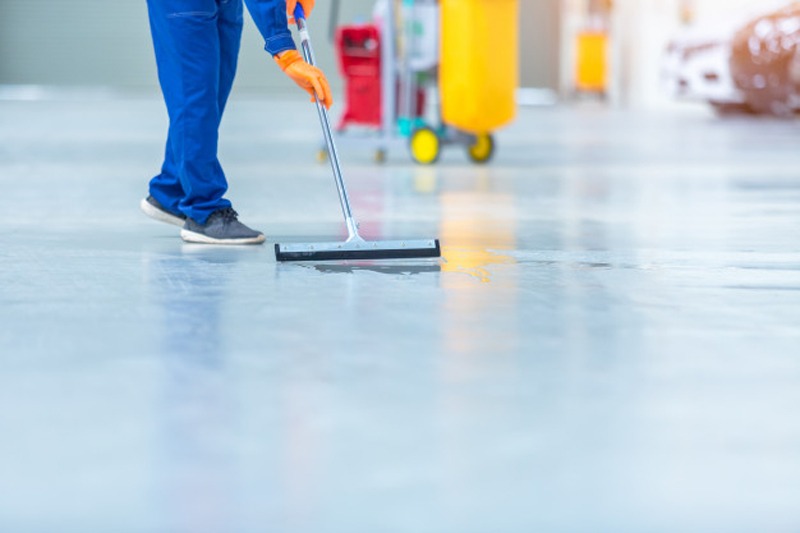Comprehensive Guide to Construction Cleaning: Essential Tips, Strategies, and Best Practices for a Spotless Finish
Essential Guide to Construction Cleaning

Introduction
Construction cleaning is a critical aspect of any building or renovation project. It ensures that the newly constructed or remodeled space is not only visually appealing but also safe and ready for use. This guide delves into the comprehensive process of construction cleaning, offering valuable insights, strategies, and best practices to achieve a pristine finish. Whether you’re a contractor, project manager, or property owner, understanding the nuances of construction cleanup will help you deliver a polished and professional result.
1. Understanding Construction Cleaning
Construction cleaning involves a series of cleaning tasks performed after the completion of a construction project. This process is crucial for removing debris, dust, and residues that accumulate during construction. It typically includes several stages, from initial rough cleaning to final detailing.
1.1. The Importance of Construction Cleaning
Proper cleaning after construction is essential for several reasons:
- Health and Safety: Construction sites often leave behind hazardous materials such as dust, sharp objects, and chemical residues. Thorough cleaning eliminates these risks, making the space safer for occupants.
- Aesthetic Appeal: A clean environment enhances the visual appeal of the finished project, ensuring that every detail is highlighted and the space is presented in its best light.
- Preparation for Use: Effective cleaning ensures that the space is ready for immediate use or occupancy, avoiding delays and ensuring a smooth transition.
2. Stages of Construction Cleaning
Construction cleaning is typically divided into three stages: rough cleaning, detail cleaning, and final cleaning.
2.1. Rough Cleaning
Rough cleaning occurs early in the cleaning process and focuses on removing large debris and residues left from the construction work. This stage includes:
- Removing Debris: Large materials such as wood scraps, metal shards, and packaging materials are cleared from the site.
- Dusting: Initial dust removal from surfaces, floors, and other areas helps prepare for more detailed cleaning later.
- Basic Surface Cleaning: This involves wiping down surfaces and removing obvious stains or marks.
2.2. Detail Cleaning
Detail cleaning is more focused and involves thorough cleaning of all surfaces. This stage ensures that the space is free from fine dust and residues. Key tasks include:
- Surface Cleaning: Wiping down all surfaces, including walls, ceilings, and fixtures, to remove dust and stains.
- Window Washing: Cleaning windows, frames, and sills to ensure they are clear and free from construction residue.
- Floor Cleaning: Vacuuming and mopping floors to remove dust and dirt. Special attention is given to corners and edges where debris may accumulate.
2.3. Final Cleaning
Final cleaning is the last step and focuses on achieving a pristine finish. It includes:
- Detailed Inspection: Checking all areas to ensure no dust or residue remains. This involves inspecting for smudges, fingerprints, and other imperfections.
- Polishing: Applying polish to surfaces such as floors, countertops, and fixtures to enhance their appearance.
- Trash Removal: Ensuring all trash and waste materials are properly disposed of or recycled.
3. Best Practices for Effective Construction Cleaning
To ensure a successful cleaning process, consider these best practices:
3.1. Use the Right Tools and Equipment
Investing in high-quality cleaning tools and equipment is essential for effective construction cleaning. This includes:
- Vacuum Cleaners: Commercial-grade vacuums with HEPA filters are ideal for removing fine dust and debris.
- Microfiber Cloths: These are effective for dusting and cleaning surfaces without leaving streaks or residues.
- Floor Cleaning Machines: Floor scrubbers and polishers can save time and achieve a professional finish.
3.2. Implement a Cleaning Schedule
A well-structured cleaning schedule helps organize the cleaning process and ensures that all tasks are completed efficiently. Consider the following:
- Create a Checklist: Develop a detailed checklist of cleaning tasks for each stage to ensure nothing is overlooked.
- Assign Responsibilities: Allocate specific tasks to team members based on their expertise and the cleaning stage.
3.3. Address Safety Concerns
Safety should always be a priority during construction cleaning. Follow these guidelines:
- Wear Protective Gear: Ensure that all cleaning staff wear appropriate personal protective equipment (PPE) such as gloves, masks, and goggles.
- Handle Chemicals Safely: Use cleaning chemicals according to manufacturer instructions and ensure proper ventilation in the area.
4. Common Challenges and Solutions
Construction cleaning can present several challenges. Here are some common issues and how to address them:
4.1. Stubborn Stains
Stains from paint, adhesives, or other materials can be difficult to remove. Use specialized cleaners designed for these types of stains and test them on a small area first to avoid damage.
4.2. Dust Accumulation
Dust can settle on surfaces quickly after cleaning. To minimize this, use high-efficiency air filters and maintain good ventilation throughout the cleaning process.
4.3. Time Constraints
Cleaning a large construction site can be time-consuming. Plan the cleaning schedule carefully and consider hiring additional staff if necessary to meet deadlines.
5. Hiring Professional Cleaning Services
In some cases, it may be beneficial to hire professional cleaning services. Professional cleaners have the experience and equipment to handle large-scale or complex cleaning tasks. When selecting a cleaning service, consider:
- Experience and Reputation: Choose a service with a proven track record in construction cleaning.
- Services Offered: Ensure that the company offers comprehensive cleaning solutions tailored to your needs.
- Cost and Contract Terms: Obtain detailed quotes and review contract terms before making a decision.
6. Conclusion
Construction cleaning is a vital step in the building process, ensuring that spaces are safe, clean, and ready for use. By understanding the different stages of cleaning, implementing best practices, and addressing common challenges, you can achieve a flawless finish that enhances the overall quality of your project. Whether you handle the cleaning yourself or hire professionals, a thorough and effective cleaning process will contribute to the success and satisfaction of your construction project.
